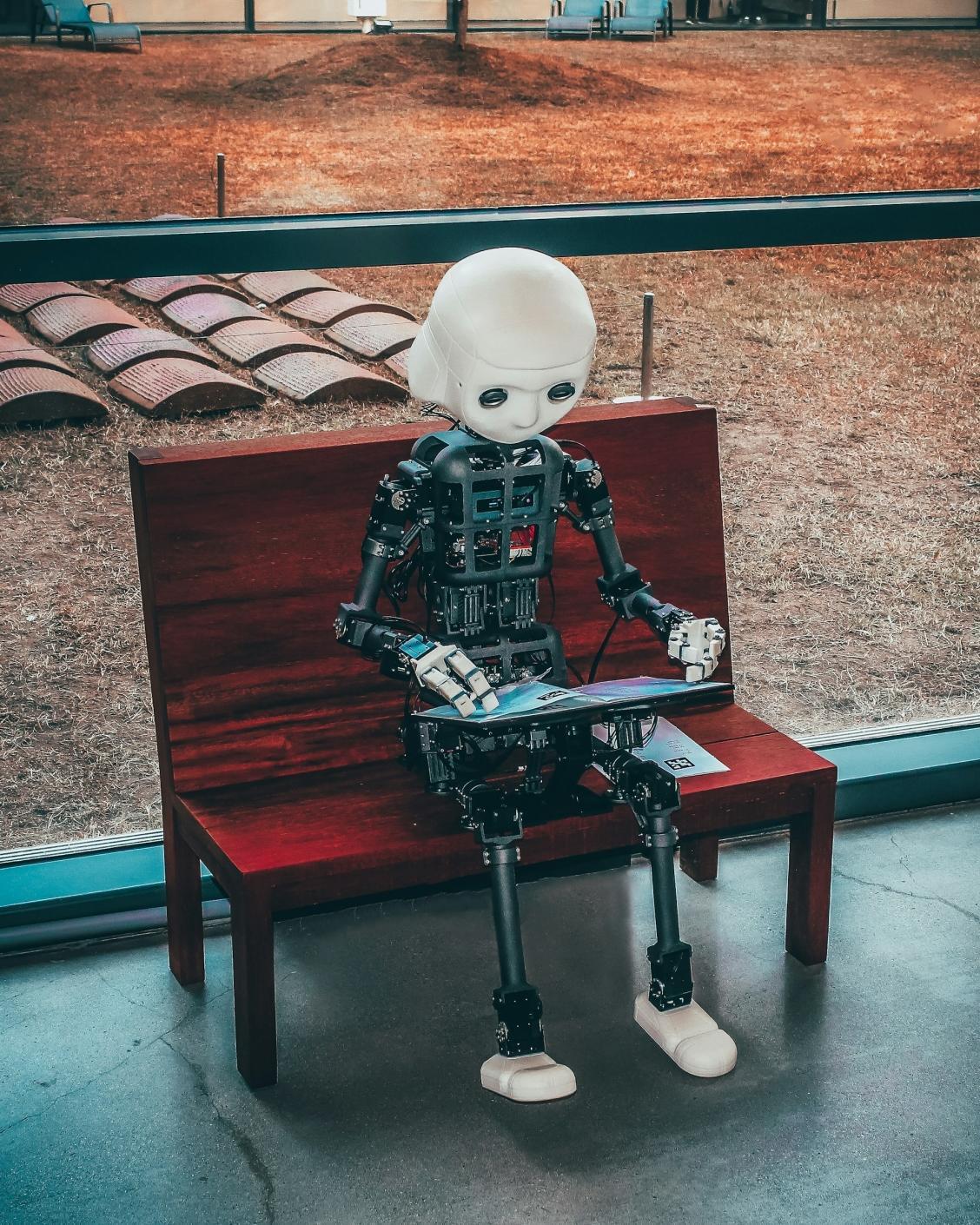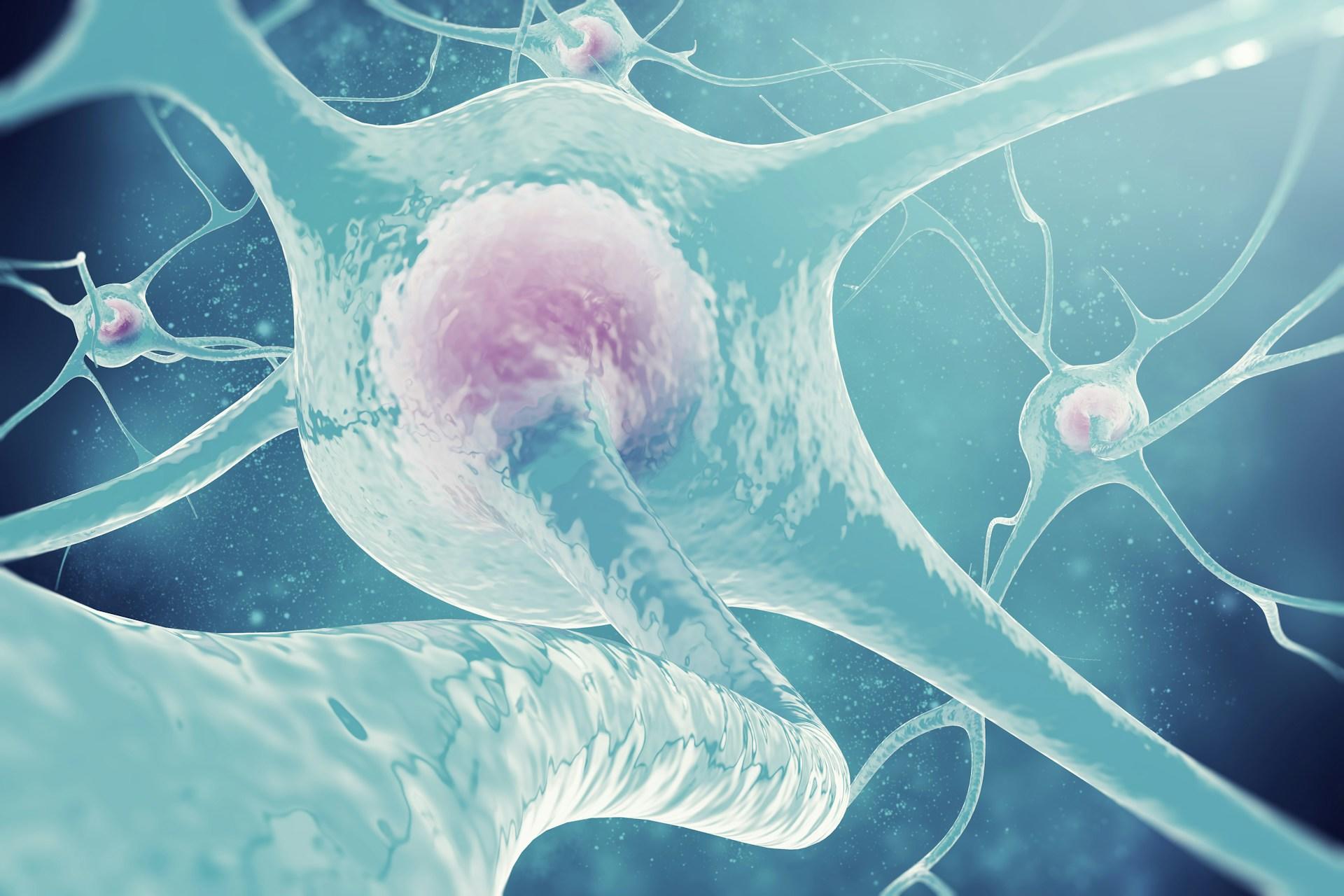Which classes will give me the skills that machines will not replicate, making me more distinctly human?
David Brooks
If there is one field of human knowledge that has literally made giant steps in recent decades, it is undoubtedly that of artificial intelligence. AI has revolutionised many sectors, from IT to industry, but has had a particularly strong impact on the education sector. You don't have to be a student or a teacher to realise that the way we learn and assimilate information has changed radically in the space of a few years.
AI is an acronym that stands for "artificial intelligence". This expression refers to the ability of machines to perform tasks that traditionally required human intelligence, such as learning, solving problems or understanding and analysing natural language. The term "artificial intelligence" was coined in 1956 by computer science pioneer John McCarthy during the Dartmouth Conference, universally recognized as the kick-off of research in the field of AI.
AI-based technologies are redefining the horizons of learning: thanks to these innovative new technologies, students and teachers have access to increasingly advanced tools, which allow them to make studying more immediate, personalised, targeted and accessible for all. How? Until a few years ago, for example, it was impossible to imagine having a personal tutor who analyses and learns about a student's strengths and weaknesses, providing them with the most suitable teaching material for their specific needs. For many students, AI has become an indispensable tool like the calculator would have been for previous generations 1.
of undergraduate students in the UK use AI for essays².
But what are the stages that led artificial intelligence to become an essential tool for schools? What are the most useful tools and the major problems related to the use of this technology today and what are the future challenges that await us? In this guide, we will try to answer all these questions! Get ready to enter the universe of AI and learn how to use it to your advantage! 🚀🤖

From Science Fiction to Reality: The History of AI in Education
In just over half a century, artificial intelligence has gone from being seen as a utopian project imagined for a distant future, to becoming a technology used across many aspects of our everyday life. Entire volumes could be written on the history of the development of this technology, but for the purpose of this article, we'll limit ourselves to observing the most important stages in the evolution of AI in education.
Before going into detail, we have developed a summary timeline that will help you orient yourself and get a better overview of the fundamental stages of this journey:
1950s
The theoretical foundations of artificial intelligence
In the 1950s, the first theories of artificial intelligence began to take shape and spread in the scientific field thanks to the pioneering work of Alan Turing, who introduced the idea of ??a machine capable of learning and reasoning. This period laid the conceptual foundations for all future applications of AI, including those in the educational field.
60s
The advent of PLATO
The next decade was marked by the development of PLATO, one of the first assistive learning systems, created at the University of Illinois. Purely avant-garde for its time, this program explored the potential of interactive learning, marking an important step forward in the integration of AI in the educational sector.
70s
The expansion of tutoring systems
The 1970s saw a significant evolution in the use of artificial intelligence in education with the development of intelligent tutoring systems. These systems began to personalise education, adapting to the individual needs of students and offering tailored learning programs.
80s
AI in education is becoming more sophisticated
During the 1980s, artificial intelligence became more sophisticated with the creation of educational systems that used complex algorithms to dynamically adapt teaching materials to student interactions, further improving the personalisation of the educational experience.
90s
The affirmation of adaptive educational systems
Adoptive education systems gained traction in the 1990s. With the spread of the internet, it became possible to collect and analyse more data. This was the takeoff point for AI as we know it today.
2000s
The Age of Data and MOOCs
The Internet is now accessible to everyone and the digitalization of information in the early 2000s revolutionised education through the introduction of Massive Open Online Courses (MOOCs). Platforms such as Coursera and edX use AI to analyse large amounts of data on students, improving the design and effectiveness of courses.
2010s
Chatbots and Performance Prediction
The integration of AI in education reaches new heights in the 2010s with the emergence of educational chatbots and systems capable of predicting student performance. These tools make learning even more accessible and personalized. The idea of ??being able to build customized learning paths for each student is no longer a utopia.
2020s
Artificial Intelligence and Ethical Challenges
The 2020s highlight the ethical challenges of using AI in education, with a focus on the need for transparent, equitable, and accessible systems. The decade also sees the advancement of AI-integrated augmented and virtual reality technologies, which promise to further revolutionize educational environments with innovative immersive experiences.
As we can see from the timeline, the history of artificial intelligence is a story full of twists and turns! Beyond the speculations in the literary and artistic fields, where science fiction was establishing itself as a means to envision fantastical futures, the idea that a machine could learn to think like a human being began to take shape in the first post-war period. It was the English mathematician Alan Turing who was the pivotal figure in this nascent field:
Alan Turing
In a short time, it becomes clear that not only is the idea of a machine that can learn brilliant but that the potential of this idea in the educational field opens up horizons that were previously unimaginable 🤯. Between the 1960s and 1980s, several universities and computer science research institutes focused their studies on the development of artificial intelligence in the educational field.
The first of these is PLATO, an acronym for "Programmed Logic for Automated Teaching Operations", a pioneering program that allowed students to access interactive lessons via a network of interconnected terminals (obviously nothing comparable to modern online courses, which however would not exist without this predecessor 👴).
Then comes SCHOLAR, another program that used a semantic system to answer study questions - in short, a true ancestor of ChatGPT! Finally, we can also mention GUIDON, a program developed in the 80s that collected information to provide more targeted instruction programs, and which was starting to show a certain level of sophistication compared to its predecessors.

When we talk about the 90s and computing, the first idea that comes to mind is obviously the explosion of the Internet — a real revolution, so much so that today it is difficult to imagine a pre-web world. It wasn't long before the potential of AI applied to the online world was understood and experimentation began.
The new millennium saw a further expansion of the use of artificial intelligence in education with the introduction of Massive Open Online Courses (MOOCs) and platforms such as Coursera and edX. These platforms have revolutionised access to education, leveraging AI to analyse massive volumes of student data and improve course design. Machine learning algorithms have enabled the creation of highly personalized learning experiences, continuously adapting to student progress and difficulties.
In the 2010s, AI began to penetrate even more deeply into the daily fabric of education. Schools and universities began using systems to monitor student performance, identify those at risk of failing, and intervene promptly. Tools like educational chatbots — which offer 24/7 support and assistance and can answer students’ questions in real time — have become increasingly common.
And here we are in the third decade of the third millennium in which we currently live, AI continues to evolve and challenge traditional teaching methods. Augmented and virtual reality technologies, integrated with AI, promise to create immersive learning environments that in a very short time will be able to completely revolutionise the way we learn and study. However, there are challenges, as we will see in the next section of the article.

In short, as we have seen, artificial intelligence and education have always been intrinsically connected, so much so that since the birth of this technology, experiments have been carried out to apply it in the educational field. In recent years, this process has seen a clear acceleration, and already today the majority of students use AI for educational purposes.
Advantages, Limitations and Disadvantages of AI in Education
Artificial intelligence is probably the biggest revolution we are witnessing today, and it will undoubtedly change the way we live and learn. And while it has many benefits, there are also some issues associated with its use that should not be ignored.
Here are some of the biggest advantages and disadvantages to keep in mind when talking about AI in education:
👍🫅 Personalised learning:
Thanks to its advanced algorithms and the ability to process infinite series of data in a very short time, AI is able to develop personalised learning strategies and programs in the snap of a finger, which allows you to obtain maximum performance with minimum effort by adapting to the strengths and weaknesses of students.
👎🕵️♀️ Ethical and privacy issues :
The widespread use of students' personal data raises important ethical and privacy issues. It is essential to ensure that this data is protected and used transparently. In addition, there is a need to address the issue of bias in AI algorithms, which can perpetuate or amplify existing inequalities.
👍⏱️ 24/7 Access to Educational Resources :
AI-powered tools, such as educational chatbots, provide uninterrupted support to students and are able to answer their questions and provide assistance in real time, regardless of the time. An advantage that previous generations certainly did not have.
👎😨 Technology addiction :
Always relying on AI and more generally on new technologies can, especially at a young age, compromise the development of critical thinking and problem-solving. The solution is obviously not to completely remove technology from children's lives, but to find the right balance.
👍🦾 Automating Administrative Tasks :
AI can automate many administrative tasks, such as managing student records, scheduling courses, and grading assignments. This reduces the workload for teachers, allowing them to spend more time teaching and addressing the needs of individual students.
👎🙅 Resistance to change :
The assimilation of AI in schools could be a long process, since it could encounter some resistance from teachers and school administrators, often due to lack of training and fear of being replaced by technology. From this perspective, it's essential for schools to adapt policies at a national level that provide suitable training and refresher courses for educators.
👍🛟 Support for special educational needs :
AI can also be used to develop educational tools that address the specific needs of students with disabilities, such as speech recognition software for students with writing difficulties or sign language translation applications for students with hearing impairments.
👎💰 Cost and accessibility :
Although most AI platforms are free or at least have low costs, it should not be forgotten that to use them you need computers and smartphones that not everyone has. In this sense, AI risks generating even more inequality in the school field, drawing a clear line between those who can afford the necessary technologies and those who cannot.
Finally, it should be remembered that, despite technological progress, AI will never be able to fully replace human interaction. Not only because the human factor in managing lessons is obviously of primary importance, but also because the relationship between teachers and students is a fundamental part of the teaching process, and represents an essential stage in the development of emotional and social intelligence in children.
What do you think is the main challenge posed by the use of AI in education?
In conclusion, it is undeniable that artificial intelligence will open up enormous horizons, facilitate many aspects of study and improve the educational experience as a whole, but for this to happen it is essential to recognise its risks and limits in order to regulate and contain them.
If you're intrigued by the potential and limitations of Artificial Intelligence in education, we recommend listening to this podcast from The Guardian. It delves into the question of whether computers can ever truly replace the classroom, examining the current capabilities of AI in educational settings in the UK and the challenges that remain.

The best AI tools for learning
Did you know that the human brain is capable of storing an astonishing amount of information, far greater than that of a standard computer? On the other hand, a computer will generally be much faster at finding a specific piece of information within its memory than a human brain.
While it is difficult to calculate the exact amount, it is estimated that the storage capacity of the human brain is about 2.5 petabytes (2.5 million gigabytes). In short, if your brain were a hard drive, it could hold three million hours of high-resolution movies³.
A typical computer typically has an internal memory ranging from 256 GB to 2 TB. Supercomputers, like the Frontier, operate at much larger scales, with capacities reaching Exabytes, equivalent to millions of Terabytes, allowing them to store impressive amounts of data.
We often contrast natural intelligence with artificial intelligence, trying to understand which of the two is "better". But the truth is that the best option is the one obtained when these two intelligences collaborate 🤝.

For this reason, we have decided to compile a list of the best programs that use AI in education, dividing them by category. Whether you are a teacher who wants to educate your students on the use of AI or a student looking for tools that can improve your school experience, we are sure that these resources will be useful to you!
AI in Schools: Taking Notes and Organising Them ✍️
Let’s start with the best AI tools designed to assist students in the classroom, especially for taking, reviewing, and organising notes.
| Tool | Logo | Description | Main Features |
|---|---|---|---|
| Otter.ai |  | An application that allows you to transcribe notes in real time. | Automatic transcription of lectures and meetings, organization of notes, sharing of audio files. |
| Notion |  | One of the most complete platforms for taking and organizing notes, with integrated AI. | Organize notes, manage projects, databases, collaborate on projects in real time. |
| Scribe |  | AI-based transcription tool to convert audio to text. | Accurate transcription, summary of key points, export to various formats. |
| Evernote |  | Application that allows you to take notes and memos with integrated AI functionality to better organize them. | Create text, voice and photo notes, advanced search, synchronization across multiple devices. |
| OneNote |  | Part of the Microsoft suite, it uses AI to improve note management. | Section organization, integration with other Microsoft apps, handwritten text recognition. |
AI Tools for Repeating, Learning and Memorising 🧠
These tools use advanced algorithms to create personalised learning experiences that will help you get the most out of your studies.
| Tool | Logo | Description | Main Features |
|---|---|---|---|
| Khan Academy |  | Free educational platform that uses AI to suggest the most suitable lessons. | Video lessons, practice exercises, personalized progress dashboards, study recommendations. |
| Quizlet |  | Study tool that uses AI to create personalized flashcards and quizzes. | Creating flashcards, memory tests, different study modes, progress tracking. |
| Smart Sparrow |  | Learning platform that uses AI to provide feedback and advice to students. | Interactive lessons, real-time feedback, personalized learning paths, data analysis. |
| Brainly |  | Educational social network that uses AI to help students solve problems and understand complex concepts. | Answers with detailed explanations, quality control of answers, welcoming community ready to lend a hand. |
| DreamBox |  | Math program that uses AI to understand students' difficulties and propose personalized paths. | Personalized math lessons, instant feedback, progress tracking, detailed analysis. |
AI Tools for Homework 🙇
These tools are designed to help students with their homework. In most cases, they also provide personalised feedback and advice for improvement.
| Tool | Logo | Description | Main Features |
|---|---|---|---|
| Socratic by Google |  | App that uses AI to help students find answers and explanations for their assignments. | Scanning for issues, finding relevant resources, providing detailed explanations, providing support in various subjects. |
| Photomath |  | Tool that uses AI to solve math problems by scanning equations with the camera. | Math problem scanning, step-by-step solutions, interactive graphs, detailed explanations. |
| Wolfram Alpha |  | Computational engine that uses AI to answer questions and solve complex problems. | Mathematical calculations, answers to scientific questions, data analysis, detailed explanations. |
| Chegg Study |  | Service that uses AI to provide homework solutions and teaching support. | Detailed solutions, step-by-step explanations, assistance for various subjects, online tutoring. |
| Grammarly |  | Writing tool that uses AI to improve the quality of texts and correct errors. |
AI for learning languages 🗣️
Let's continue with the most effective AI tools for language learning. Until a few years ago, it would have been unthinkable to have a virtual assistant on your phone to converse with in English, but today it's already a reality!
| Tool | Logo | Description | Main Features |
|---|---|---|---|
| Duolingo |  | The popular language learning app that uses AI to personalize lessons. | Personalized lessons, interactive exercises, progress tracking, gamification. |
| Rosetta Stone |  | Language learning software that uses AI for immersive learning. | In-depth lessons, speech recognition, personalized learning, cultural content. |
| Babbel |  | Language platform that uses AI to offer personalized lessons. It is paid. | Grammar and vocabulary exercises, interactive dialogues, immediate feedback, progress tracking. |
| Memorise |  | AI-powered language learning app to improve memory and comprehension. | Videos of native speakers, memorization exercises, gamification, progress tracking. |
| Busuu |  | Language platform that uses AI to create personalized study plans. | Interactive lessons, expert feedback, level tests, available and active community. |
AI in the arts and music 🎶
Artificial intelligence has not spared the world of art and creativity either. Here are some tools that use AI to help you learn to play an instrument or draw.
| Tool | Logo | Description | Main Features |
|---|---|---|---|
| AIVA |  | AI for music composition, used to create soundtracks and custom music. | Automatic composition, variable music styles, export to various audio formats. |
| Amper Music |  | AI tool that helps musicians create unique music tracks. | Custom music generation, editing tools, real-time collaboration. |
| Google Magenta |  | Project exploring the use of AI in artistic and musical creation. | Music and art generation, creative editing tools, developer APIs. |
| RunwayML |  | Tool that integrates AI for the creation of visual and audio content. | 3D modeling, advanced video editing, image generation, audio synthesis. |
AI for people with specific learning needs 🙋
Finally, let's take a look at some AI tools designed to support students with special educational needs. This is one of the areas where artificial intelligence reveals its full potential, and can really make a difference by leveling out differences and making schools more inclusive.
| Tool | Logo | Description | Main Features |
|---|---|---|---|
| Speechify |  | App that transforms written text into speech, helping students with visual impairments or dyslexia. | Text-to-speech, adjustable speed, support for various file formats, multi-device synchronization. |
| ModMath |  | App designed to help students with learning difficulties in mathematics. | Creating digital mathematical documents, step-by-step problem solving, visualisation tools. |
| Dragon Naturally Speaking |  | Speech recognition software that helps students with motor difficulties. | Accurate voice transcription, voice commands to control your computer, vocabulary customisation. |
| Shortwave 3000 |  | Learning tool that supports students with reading and writing disabilities. | Read aloud, text highlighting, multilingual translation, voice and text notes. |
⚠️ Remember that all these tools can be valuable allies, but they cannot replace classic learning with a teacher and, if you feel the need, with tutoring or private lessons. As we have already seen, the human factor is essential in learning and no AI resource can ever completely replace it.
Education & AI: Rules and Restrictions Around the World
Generative AI is a powerful tool for creativity and innovation, but we need to ensure it is used ethically and responsibly.
Sam Altman, CEO of OpenAI
Given the wave of change that AI is generating in the world of education and beyond, it is natural to ask at what point this new technology should be regulated, and many countries are already putting in place policies aimed at framing the use of artificial intelligence.
Among the main countries that have adopted such policies are the UK, Italy, the US and China, each with distinct approaches but with a common goal: to ensure the ethical and safe use of AI in different fields, including education.

United Kingdom 🇬🇧
The UK's policy on AI in the education sector promotes using generative AI to enhance learning and reduce teachers' administrative burdens, ensuring educators can focus more on teaching. The Department for Education (DfE) emphasises the importance of professional oversight to maintain the accuracy and appropriateness of AI-generated content?. To support its effective adoption, the UK government has launched initiatives such as hackathons with educators and data scientists to explore AI applications in schools and has made substantial investments in AI research and upskilling educators?.
Italy 🇮🇹
In March 2023, Italy became the first Western country to temporarily ban ChatGPT, citing reasons related to privacy and opaque use of users' personal data?. The site became accessible again after the CEO of OpenAI implemented measures to meet the required privacy requirements. Today, Italy is one of the countries promoting the training of teachers and pupils in the conscious and responsible use of AI tools.


USA 🇺🇸
In the United States, policy regarding the use of AI in schools varies widely from state to state. At the federal level, the two main bodies concerned with regulating the use of AI in education, especially with regard to the protection of children's data, are the Children's Online Privacy Protection Act (COPPA) and the Family Educational Rights and Privacy Act (FERPA).
China 🇨🇳
China has a different approach, in some respects more focused on control. The Interim Measures for the Management of Generative Artificial Intelligence Services, which went into effect on August 15, 2023, is an example of how the country is managing the use of generative AI?. These measures require that generative AI services comply with socialist values and not generate content that could destabilize the country, as well as include provisions for the protection of intellectual property rights and privacy.


Germany 🇩🇪
In Germany, restriction policies on AI in education are heavily influenced by European data protection regulations, but the country has also developed some specific guidelines. The country promotes research and development of ethical and secure AI technologies through government initiatives and partnerships. It is the Bundesbeauftragte für den Datenschutz und die Informationsfreiheit (BfDI) that oversees the implementation of these regulations, seeing to it that student data are protected and used in a compliant manner.
As can be seen from these examples, most of the regulations adopted in different countries currently concern more the sphere of privacy and personal data than those strictly related to AI issues in education, such as plagiarism. However, the fact that there are no regulations at the governmental level for the time being does not mean that reckless use of AI in education does not have consequences.
🤔 So can I use ChatGPT to do homework?
The short answer to this question is yes, nothing absolutely prohibits you from using ChatGPT or other similar resources to do homework. But there are three aspects you should keep in mind:
Your school's policy ?
Individual colleges and universities may adopt restrictive regulations regarding AI. Make sure you know your establishment's regulations.
Ethics and plagiarism ?
Submitting text entirely written by ChatGPT is not only unethical but could be considered plagiarism and get you in trouble. Make conscious and moderate use of it.
Learning ?
Remember that you go to school or college to learn. If you entrust everything to ChatGPT, you will not assimilate the skills you need and risk finding yourself in trouble in the world of work.
AI and Education: Future Prospects
The world that awaits us tomorrow depends greatly on the choices we are able to make today as a society. Technology will undoubtedly enable us to broaden our horizons, creating immersive learning experiences and saving us time and energy to devote to actual study.

Among the trends that we can already notice today and that in a few months or years will be part of our daily lives we can note:
- Augmented reality (AR) and virtual reality (VR): AI, combined with AR and VR, is transforming classrooms into immersive environments where students can explore ancient civilizations, safely simulate complex science experiments, and interact with 3-D models in ways that make learning not only more effective but also extremely fun and playful.
- Smart tutors and virtual assistants: imagine having a personal tutor available 24/7 who knows your strengths and areas where you should improve instead. Smart tutors and virtual assistants, powered by AI, are becoming increasingly sophisticated and are now able to offer personalised programs and feedback that will enable students to catch up. Remember, however, that these tutors are meant for additional help, but they cannot replace school and private teachers.
- Big data analytics and predictive learning: with big data analytics, AI can predict student performance and identify areas of difficulty in time. This makes it possible to intervene upstream with targeted solutions, thus improving results and drastically limiting the risk of failing.
As for the near future, however, there are three innovations to watch out for:
eXplainable AI (XAI) 💎
Explainable AI aims to make AI decision-making processes more transparent and understandable. In the educational context, XAI will help teachers and administrators better understand AI-generated recommendations, ensuring more ethical and thoughtful decisions.
Collaborative AI or collaborative AI 🧑🏫
Collaborative AI represents the synergy between artificial and human intelligence. AI systems will work alongside teachers, analysing student responses and helping teachers develop teaching methods suitable for classroom needs in real time.
Global learning platforms 🌍
As AI advances, global learning platforms will emerge that make education accessible to anyone, anywhere. These platforms will use AI to deliver high-quality courses in different languages and on various devices, breaking down geographic and socioeconomic barriers.
The introduction of all these innovations, however, will have to be accompanied by reflections and decisions made at the individual but especially the societal level. Questions need to be asked about how to contain AI bias so as not to generate further inequality, or how to make these new technologies sustainable and accessible to all. In addition, training programs are absolutely essential for both teachers and students who will be working closely with AI.
AI in itself is neither bad nor good, but a tool that if used properly can truly revolutionise the world of learning. So all that remains for us to do is to strive for its conscious and moderate use 😉!
Bibliography
1. Marco Trabucchi, "Intelligenza artificiale a scuola: il 65% degli studenti Italiani usa ChatGpt": https://www.ilsole24ore.com/art/intelligenza-artificiale-scuola-65percento-studenti-italiani-usa-chatgpt-AF4QeP3D#
2. Richard Adams, "More than half of UK undergraduates say they use AI to help with essays": https://www.theguardian.com/technology/2024/feb/01/more-than-half-uk-undergraduates-ai-essays-artificial-intelligence
3. Professor Pankaj Sah, Associate Professor Olivier Piguet, Dr Jee Hyun Kim, "Total recall? The making of memories": https://www.science.org.au/curious/people-medicine/memory
4. Luca Zorloni, "Il Garante della privacy blocca ChatGPT in Italia": https://www.wired.it/article/chatgpt-blocco-italia-garante-privacy/
5. Reinout van Malenstein, "China's first legal Measures on Artificial Intelligence (AI)": https://www.lexology.com/library/detail.aspx?g=e0a152c4-273b-42b2-a9b4-b726933827ee
6. UK Department For Education, "Generative artificial intelligence (AI) in education: Policy Paper": https://www.gov.uk/government/publications/generative-artificial-intelligence-in-education/generative-artificial-intelligence-ai-in-education
Your Information Technology tutor is waiting for you on Superprof!
Want to give it a try?
Let our experts impress you!


















